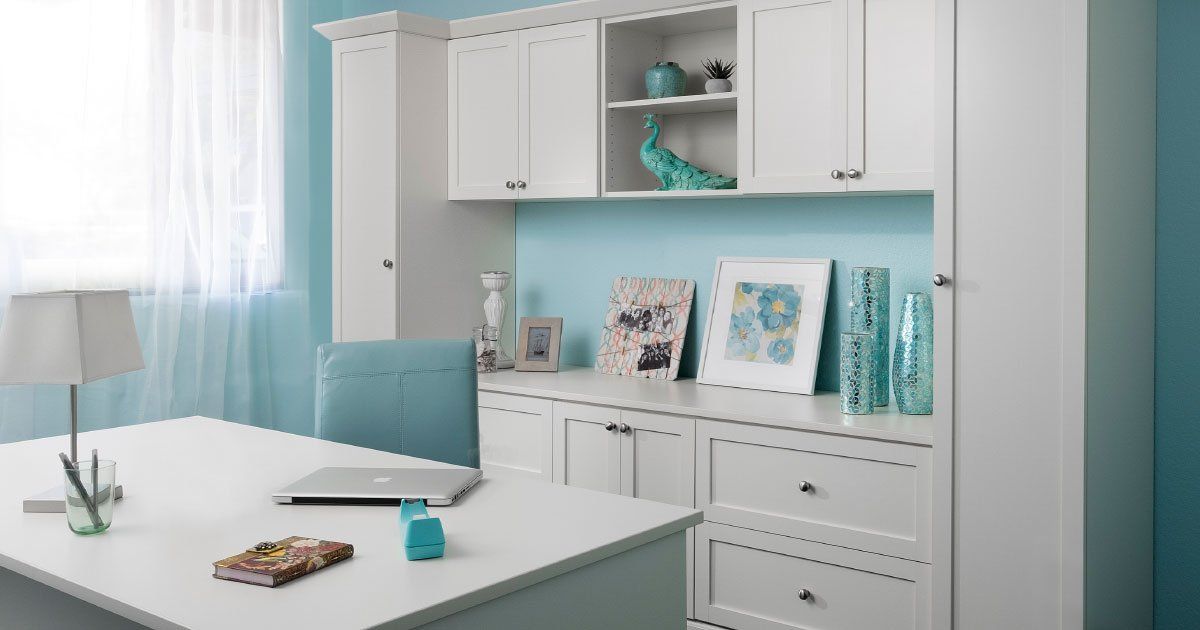
Whether you’ve been working from home for years or you’ve only started recently, you need a reliable home workspace that facilitates your ability to do your best work and be productive. However, what can you do if you’re not the only person in your home who’s working from home? That can be a tricky problem to solve, but it is possible to create a custom home office for two.
- Understand Each Other’s Working Styles
- Define Each Work Space
- Know What to Share and What Not to
- Don’t Forget About Ergonomics
Learn how to put together a great working space for two when you have to share your home office
Understand Each Other’s Working Styles
Before the two of your begin working together, you should get to know each other’s work styles. This knowledge will help you set up your home office space in a way that can accommodate both of your needs. Remember that your compatibility as partners, family members, or roommates may not translate into workplace compatibility. If you like to keep your desk as clear as possible, but the other person likes to spread papers and supplies over every available space while they work, a double desk or two desks positioned face to face is liable to drive both of you out of your mind. Their clutter will inevitably spread onto your half of the workspace and you’ll try to straighten up the stacks of paper and supplies that distract you from your work.
However, if you know this information about each other before you start planning the office, you can go ahead and plan on two separate desks in separate spaces in the room. You can even face away from each other if that helps prevent each person from fixating on the other one’s surface space. It also helps to know whether one of you may be leaving the office area frequently so their workspace can be closest to the door, or whether either of you is bothered by certain noises, which might necessitate noise-canceling headphones, a white noise machine, or some other solution.
Define Each Workspace
There are plenty of ways to set up two workspaces, including double desks or wall-mounted standing desks that can put both workers near each other while they work. Even if you’re splitting a workspace and that sounds fine to both of you, though, it’s important to define each person’s workspace and set boundaries.
This can mean using a divider to separate two desks placed close together – for example, a bookcase placed in between two wall desks, or a room divider in the middle of the room. If both of you are more flexible about your space, a simple agreement about which areas belong to which person and which areas are shared may be enough even without a physical barrier. Either way, it’s important to remember that for a shared space to work, each person needs to have some type of space they have ownership over, and neither can take over the room entirely.
Know What to Share And What Not To
While separate spaces are important, some spaces and objects should be shared. A cabinet or drawer full of office supplies like paper, staples, printer ink, paper clips, and the like should be accessible to both people. Printers or paper shredders can also be shared. A bookcase can be a shared space in many cases, but if there are too many books for one bookcase between the two people, two may be needed. Bookcases, filing cabinets, and credenzas that are shared should be divided up with specific shelves or drawers for each person, rather than having things jumbled up.
Computers, phones, and desks should usually not be shared – each person needs their own equipment and needs to know that nothing will have been moved, rearranged, or deleted when they come back to it. Each person should also have their own chair. When it comes to items like desks and chairs, both people shouldn’t have the exact same one unless that’s how they’re both most comfortable. You spend a lot of time working, so you should have a desk and chair that’s comfortable for you, and your partner should have one that’s comfortable for them.
Don’t Forget About Ergonomics
Speaking of comfort, you shouldn’t forget about ergonomics when creating a shared home office. This means having the desks and chairs at the right size and height, but you should also be taking ergonomics into account when choosing things like keyboards and mice for your computer setup.
You may think ergonomics is a thing to consider in any home office, and that’s true, but paying attention to ergonomics can also help you share a home office with someone else more peacefully. That’s because ergonomics is good for more than just your body and physical health. According to Pacific Solstice, bad ergonomics can hurt not just your body, but also your mental health. They make you feel more stressed and can negatively impact your mood. That’s likely to affect how you interact with the person you’re sharing office space with. When you feel better physically and mentally, you’ll also be in a better mood and more able to get along with the person sharing your workspace.
Conclusion
You can share a home office if you need to, but to do it effectively, you and your partner will need to understand and make accommodations for each other’s working styles, define your workspaces, decide what you can and can’t share, and make good ergonomics a priority.

